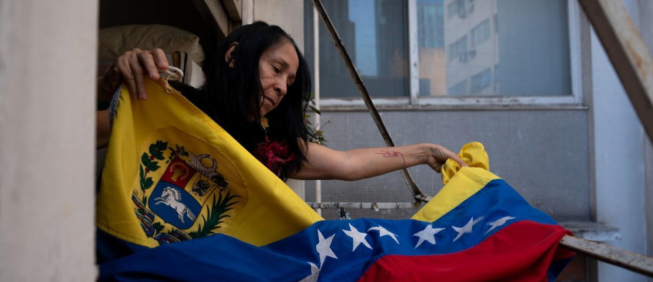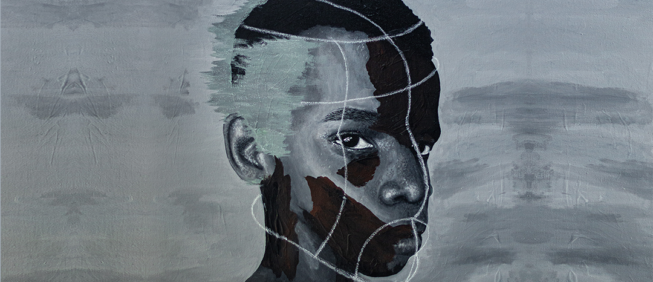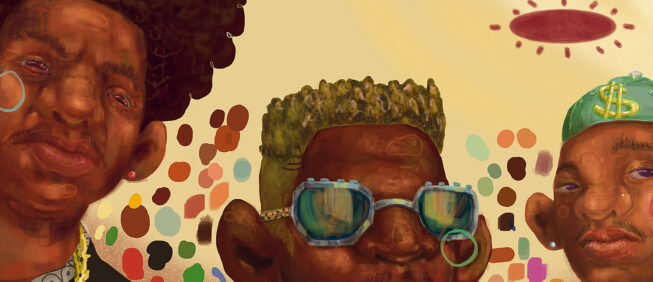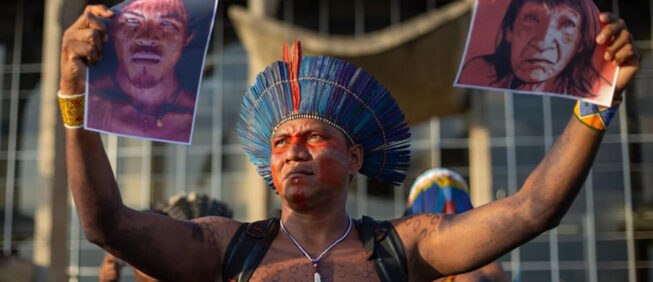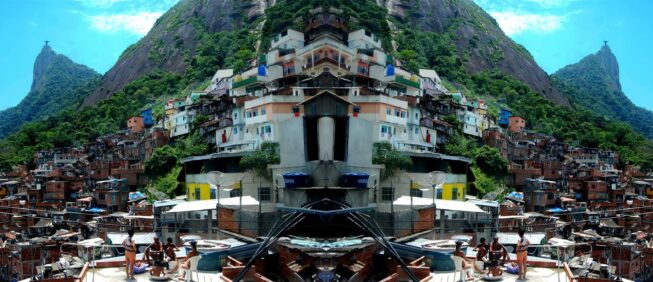The subject of skin... Ours or Yours?
Patricia Santos and Luis Aser
| Brazil |
19 de May de 2018
translated by Edmund Ruge
Na minha pele. Rio de Janeiro: Objetiva, 2017, 147p.
This is a book that speaks not only of a certain content, but also of an author that covers himself in his work. An author — actor — producer… and black! Even if this final descriptor were left unsaid (many would say it is unnecessary, that it reinforces certain stereotypes and prejudices), we wouldn’t dare continue our analysis of this work without understanding its place of production and the condition of its speech.
Lázaro is one of those established actors of a certain contemporary generation, who, in a simple and brilliant way, merged his intelligence and talent at just the right moment, using them to contemplate his condition as a man in Brazil. He raised a beautiful family with his wife Thaís Araújo, and the two now exemplify the modern black couple. Now is the time for afro-empowerment to take its place in the limelight. We will not, however, give in to the gossip of the moment. Let us return to was originally proposed for this review.
Na Minha Pele is not told in chapters, but in tales that unfurl into stories and memories, experiences interlaced such that curiosity and questioning engage with content from Ramos’ television show, Espelho.
This book of tales/essays begins with a journey motivated by anguish and doubt over a world that presents itself as severely unequal, in the author’s personal life as well as in his artistic life. Ramos begins to rethink his role on stage and in his everyday life as a black Brazilian man. The text allows the author to speak from the place of a legitimate working Brazilian that lives the day-to-day reality of major Brazilian cities. Ramos recalls his childhood home: the tiny All Saints Island not far from Salvador, Bahia.
Here, Ramos relates how his childhood was one far from the violence of the major cities. No one discussed things like racism, gender, and ancestry at mass or in public places. Later, in his adolescence, he would begin to take bigger leaps, motivated by his parents’ migrant work between Salvador and All Saints Island. It is in these trips to the capital that the young Ramos first has the opportunity to leave his place of origin and to venture out in search of work and dreams in Salvador.
Between frustrations and conquests, he joins a theater group called “the Olodum Theater Band.” That boy that had grown up on an island, surrounded by totems and legends closed to the world, begins to fade away. The distance from his parents and from his home island begin to give the energetic adolescent a whole new perspective, and he soon longs to explore worlds beyond manual labor, money, and peaceful island life in the Northeast of Brazil.
With an easy and communicative smile, he begins to work in trades with little artistic value, making just enough to cover his basic needs. However, he begins to stand out from the rest of the group, following steps from the artists he most admired. These were men and women that at that time staged theater pieces with varied themes, always giving opportunities to beginners.
But anguish and doubt begin to surface at the end of the 90s. Song lyrics from the Afros de Salvador groups that spoke on racism, racial and religious discrimination begin to have their effect. Back on All Saints, the same songs and lyrics had little impact given the lack of local conversation and dialogue around the lyrics. In Salvador, however, things were different. The colors and beats of the drums together with the lyrics make him see his body, mind, and ancestry in a whole new way.
Later, with the birth of his children, the writer comes face to face with the questions that would become a part of their growth as citizens in a racist country. He immerses himself in an afro universe to sustain a new education for his children. In this new phase, as a father, the book’s tone begins to change. At home, children's books with African themes and black dolls turn into common items in the family’s life. As Ramos points out, his jokes and poems begin to leave the stage to make room for more serious writing, with questions and affirmations that go beyond his condition as actor, father and black man.
In his artistic career, Ramos begins to question scripts, movie lines and programs, looking to put an end to the negative stereotype of the roles played by black actors for decades. In this, he is successful. In a film where he was meant to carry a firearm, he convinces the director of the film to change the scene, basing it instead in a conversation on the stereotypes that blacks carry with them everyday (criminal, drug-trafficker, vagrant, among others).
In his aesthetic narrative, Ramos add quotes from his TV program and from his guests that spoke on racism. He highlights his interview with Milton Santos, in which the latter said “Brazilians are unashamed of being racist but ashamed of saying that they are [racist].”
In the final part of the book, Lázaro, in a more emphatic tone, questions his body/space/belonging and that of black people, asking how does one dominate his black body in spaces that until now were not occupied by black bodies, and why do blacks not feel represented in those spaces? He cites the behavior of some white members of the artistic space and the racist sayings normalized over time. He continues provoking a sincere and open debate about reflections for new paths in relation to access and self-esteem of black people.
He admits and takes blame for his own whitewashed behavior in moments when he reacted to cruel acts of racism with smiles and jokes, affirming that this sort of attitude is perverse and cowardly to those who seek a rebirth of black empowerment. He finishes his book affirming that “the self-perception of the white ethnicity does not exist,” therefore the question of white self-esteem is neither affected nor questioned, as they always come from a privileged place among society.
The book urges a reading that recognizes topics such as gender, racism, and sexuality, a host of topics surveyed from the experience of one black man. And not just any one: Lazaro Ramos! What we have here is a touch of biography mixed with racial debate, strengthened by Ramos’ trajectory, but just as easily re-constructed in the daily experiences of black people.
Patricia dos Santos is a black woman, university professor, and mother of twins. Active (and sometimes mourning) in the struggle against a world of social and racial injustice
Luis Aser is a black man, father, cinematographer, Afro-Anarchist. Black people at the center and in the lenses
